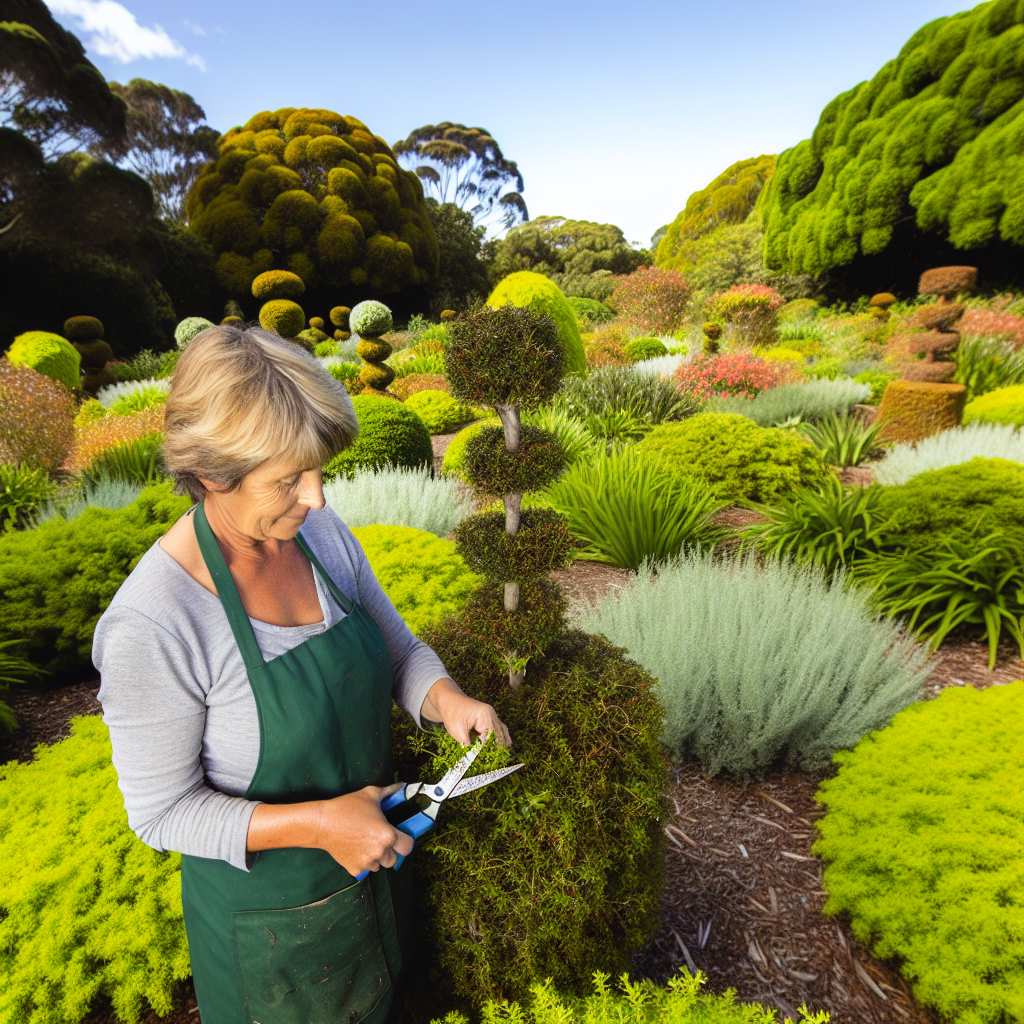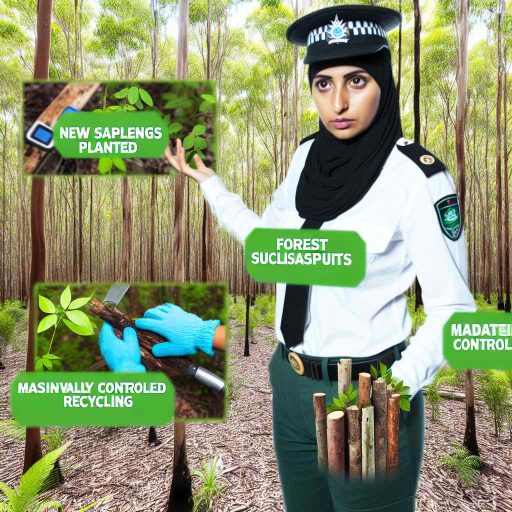The Role of Horticulturists in Designing Urban Gardens
Understanding Urban Gardening
Urban gardening enhances city living through green spaces.
Horticulturists play a crucial role in this transformation.
They design gardens that bring beauty to urban environments.
Additionally, they promote biodiversity within these areas.
Urban gardens provide habitats for various wildlife.
Collaborative Design Processes
Horticulturists often work with landscape architects.
This collaboration ensures functional and aesthetically pleasing gardens.
Moreover, they involve community members in the design process.
This inclusion creates gardens that reflect local culture.
As a result, community engagement fosters pride in green spaces.
Utilizing Native Plants
One critical aspect of urban gardening is using native plants.
Native plants thrive in local climates and soils.
Horticulturists select these plants to promote sustainability.
Furthermore, they require less water and maintenance.
This choice supports local ecosystems by attracting native wildlife.
Your Personalized Career Strategy
Unlock your potential with tailored career consulting. Get clear, actionable steps designed for your success. Start now!
Get StartedInnovative Gardening Techniques
Horticulturists employ innovative techniques to enhance urban gardening.
Vertical gardens maximize small spaces in urban areas.
Container gardening allows flexibility and creativity in design.
Hydroponic systems enable soil-free gardening options.
These techniques make urban gardening accessible to everyone.
Environmental Benefits
Urban gardens contribute significantly to environmental health.
They improve air quality and reduce urban heat effects.
Additionally, gardens manage stormwater effectively.
They also provide essential green spaces for mental well-being.
As a result, urban gardens enhance the overall quality of life.
Sustainable Practices: How Horticulturists Promote Eco-Friendly Green Spaces
Introduction to Sustainable Horticulture
Sustainable horticulture aims to create healthier environments and communities.
Horticulturists play a crucial role in implementing these practices.
They focus on eco-friendly techniques to improve biodiversity.
Plant Selection and Native Species
Choosing native plants is a common sustainable practice.
Stand Out with a Resume That Gets Results
Your career is worth more than a generic template. Let us craft a resume and cover letter that showcase your unique strengths and help you secure that dream job.
Get HiredNative plants require less water and maintenance.
Additionally, they provide essential habitats for local wildlife.
Furthermore, they contribute to maintaining local ecosystems.
Water Conservation Techniques
Horticulturists utilize various methods to conserve water.
Drip irrigation systems deliver water directly to plants’ roots.
This method minimizes evaporation and runoff.
Rainwater harvesting systems collect and store rainwater efficiently.
Soil Health and Composting
Soil health is vital for sustainable gardening.
Horticulturists promote organic composting to enhance soil quality.
Compost improves nutrient content and soil structure.
Additionally, it reduces waste by recycling organic materials.
Integrated Pest Management
Integrated Pest Management (IPM) reduces reliance on chemical pesticides.
This method uses biological controls to manage pest populations.
By promoting natural predators, horticulturists foster a balanced ecosystem.
Transform Your LinkedIn for Maximum Impact
Elevate your professional brand with a LinkedIn profile that attracts recruiters, showcases your expertise, and maximizes opportunities. Stand out in your industry with a profile built for success.
Boost ProfileMoreover, IPM encourages the use of traps and organic solutions.
Community Engagement and Education
Horticulturists engage communities in sustainable practices.
Workshops and seminars educate the public about eco-friendly gardening.
Collaboration with local schools helps promote green initiatives.
These efforts build awareness and encourage participation in sustainability.
The Impact of Horticulture on Biodiversity in Australia
Enhancing Native Flora
Horticulturists play a vital role in preserving native plant species.
They propagate local flora to restore degraded landscapes.
This work fosters a diverse ecosystem in native gardens.
Promoting Pollinator Habitats
Healthy gardens provide essential habitats for pollinators.
Horticulturists select plants that attract bees and butterflies.
These efforts increase pollinator populations significantly.
Implementing Sustainable Practices
Horticulturists embrace sustainable techniques to protect biodiversity.
They use organic methods to minimize chemical usage.
This approach supports soil health and ecosystem resilience.
Contributing to Urban Greening
Urban areas benefit greatly from horticultural practices.
Green spaces improve air quality and reduce heat islands.
These benefits enhance urban wildlife habitats as well.
Educating the Community
Horticulturists educate the public about biodiversity importance.
Workshops and community events raise awareness of local flora.
Engagement fosters a sense of responsibility towards nature.
See Related Content: The Role of Beekeepers in Supporting Pollination and Agriculture
Community Engagement: Horticulturists’ Contributions to Local Gardening Initiatives
Promoting Local Gardening Programs
Horticulturists play a vital role in promoting local gardening initiatives.
They educate communities on sustainable practices and native plant cultivation.
Moreover, they help establish community gardens that enhance local biodiversity.
For instance, Lucy Tran, a horticulturist in Melbourne, leads workshops for urban gardeners.
These workshops focus on organic gardening methods and pest management.
Collaborating with Schools
Horticulturists actively collaborate with schools to create educational gardens.
These gardens provide hands-on learning experiences for students of all ages.
For example, the Green Thumb Program in Sydney involves students in planting vegetables.
Participants learn about the lifecycle of plants and healthy eating habits.
Community Engagement Events
Many horticulturists organize community engagement events throughout the year.
They often host plant sales, garden tours, and seasonal festivals.
These events foster connection among community members and raise awareness.
For instance, the annual Spring Bloom Festival brings together local gardeners.
Participants share knowledge, resources, and gardening tips while enjoying nature.
Volunteer Opportunities
Horticulturists also facilitate volunteer opportunities in local green spaces.
Volunteering promotes community spirit and encourages environmental stewardship.
For example, the City of Brisbane offers volunteer programs in public parks.
Horticulturists guide volunteers on planting and maintaining native species.
Advocating for Green Spaces
Horticulturists advocate for the preservation and creation of green spaces.
They work with local councils to promote urban greening projects.
These projects enhance city aesthetics and improve public health.
For instance, the Urban Forest Initiative in Adelaide focuses on increasing tree canopies.
This initiative aims to reduce urban heat and improve air quality.
See Related Content: AgriTech Revolution: How Technology is Shaping the Future of Australian Farming Careers
Educational Programs: Training the Next Generation of Horticulturists
Importance of Education in Horticulture
Education plays a crucial role in shaping skilled horticulturists.
It equips them with essential knowledge about plant science and landscape design.
Moreover, trained horticulturists can address environmental challenges effectively.
Types of Educational Programs
Various programs cater to aspiring horticulturists in Australia.
These programs include vocational training, university degrees, and apprenticeships.
Each program offers practical experience and theoretical knowledge.
Vocational Training
Vocational training offers hands-on experience for students.
Through these programs, participants learn essential gardening techniques.
Training often includes plant propagation, pest management, and landscape maintenance.
University Degrees
University degrees provide a comprehensive understanding of horticultural science.
Students study topics such as botany, soil science, and ecology.
This knowledge prepares them for various careers in the horticulture sector.
Apprenticeships
Apprenticeships offer on-the-job training under experienced professionals.
Participants gain practical skills while working in real-world environments.
These experiences are invaluable in building a successful horticultural career.
Industry Partnerships
Partnerships with industry leaders enhance educational programs.
Collaborations provide students with internship opportunities and mentorship.
Furthermore, they ensure that curriculums align with industry needs.
Continuing Education
Continuing education opportunities help horticulturists stay current.
Workshops and seminars cover new technologies and sustainable practices.
These programs foster lifelong learning among professionals in the field.
Community Involvement
Community involvement is vital for horticultural education.
Programs often include outreach initiatives that engage local communities.
Through volunteering, students gain real-life experience and contribute positively.
Discover More: The Importance of Agronomists in Improving Crop Yields

Cultural Significance
Horticulture and Its Influence on Australian Identity
Horticulture plays a vital role in shaping Australia’s cultural landscape.
It reflects the diverse identities within the nation.
The cultivation of native plants connects communities to their heritage.
Moreover, community gardens foster relationships and friendships.
These spaces encourage shared experiences among residents.
Horticulturists contribute to local economies through their expertise.
They promote sustainable practices that align with Australia’s environmental goals.
Additionally, urban green spaces enhance mental well-being for urban dwellers.
Gardens become places for gathering, learning, and celebrating.
Thus, horticulture enriches Australian community life across regions.
The Role of Indigenous Knowledge
Indigenous knowledge significantly informs modern horticultural practices.
Traditional methods utilize native plants suited for local climates.
This approach respects the natural ecology of the land.
Furthermore, it conserves endangered species through cultivation efforts.
By integrating this wisdom, horticulturists honor generations of stewardship.
This synergy forms a more sustainable gardening framework.
Horticulture in Urban Planning
Urban planning increasingly incorporates horticulture for community well-being.
Green spaces in cities counteract urban heat effects.
They improve air quality and enhance biodiversity.
Moreover, well-designed gardens create visually appealing areas.
Horticulturists work closely with planners to achieve these goals.
Their insights lead to innovative green infrastructure developments.
Educational Initiatives and Workshops
Horticulturists often conduct workshops to educate the public.
These initiatives promote gardening skills among all age groups.
Such educational programs foster a sense of responsibility towards the environment.
Participants learn about sustainable practices and biodiversity.
They also discover the importance of local flora and fauna.
Ultimately, informed citizens can make better ecological decisions.
Uncover the Details: Tech-Driven Farming: How Careers in Australian Agriculture are Evolving
Challenges Faced by Horticulturists in Urban Settings
Limited Space for Gardening
Urban environments often lack sufficient space for community gardens.
This limitation restricts horticulturists in their designs and installations.
Consequently, they must prioritize vertical gardening and container planting.
Soil Quality Issues
The soil quality in urban areas is frequently poor.
Horticulturists encounter contaminated or depleted soils.
They often need to amend soil with fertilizers and organic materials.
Water Management Challenges
Access to clean water can be a significant issue in cities.
Horticulturists must implement efficient irrigation systems.
Rainwater harvesting becomes an essential practice for sustainability.
Urban Heat Island Effect
Cities experience higher temperatures due to the urban heat island effect.
This phenomenon affects plant growth and health significantly.
Horticulturists must select heat-tolerant plant species.
Maintenance and Longevity
Urban gardens require ongoing maintenance and care.
Horticulturists face time constraints and resource limitations.
This reality demands innovative approaches to garden management.
Community Engagement and Education
Engaging the local community in horticultural projects is vital.
Horticulturists often lead educational workshops to foster involvement.
This engagement helps build a sense of ownership and pride.
Innovative Trends in Horticulture
Technology and its Impact on Green Spaces
Horticulturists are embracing technology to enhance green spaces across Australia.
Advanced tools are revolutionizing the way gardens are designed and maintained.
For instance, drones are now utilized for effective landscape mapping.
These aerial views provide insights into plant health and growth patterns.
Moreover, soil sensors monitor moisture levels and nutrient content.
This data helps landscapers make informed decisions on irrigation and fertilization.
As a result, water usage becomes more efficient and sustainable.
Additionally, mobile apps are changing how horticulturists connect with the public.
These platforms educate users about local flora and gardening techniques.
They encourage community engagement with urban green spaces.
Smart Horticulture Solutions
Smart gardens are emerging as a trend in modern horticulture.
Automated systems allow for remote monitoring and management of garden environments.
This involves technologies like smart irrigation and climate control systems.
These innovations lead to healthier plants and reduced waste.
Furthermore, augmented reality helps landscape architects visualize projects.
Designs can be seen from different perspectives before actual implementation.
Data-Driven Gardening
Data analytics is playing a crucial role in horticulture today.
By analyzing growth patterns, horticulturists can optimize plant selection.
They select species that thrive under specific climatic conditions.
This predictive capability enhances the sustainability of garden designs.
Incorporating native plants also supports local ecosystems.
Furthermore, data helps in assessing the impact of climate change on flora.
Future Prospects for Green Spaces
The future of horticulture in Australia looks promising due to ongoing innovations.
As technology evolves, we can expect more efficient gardening practices.
Furthermore, enhanced public awareness will lead to increased interest in green spaces.
Collaboration between horticulturists and urban planners will become essential.
This partnership will create versatile environments that meet community needs.
Additional Resources
#publicgardens #treeconservation | M. Murphy Westwood | 30 …




